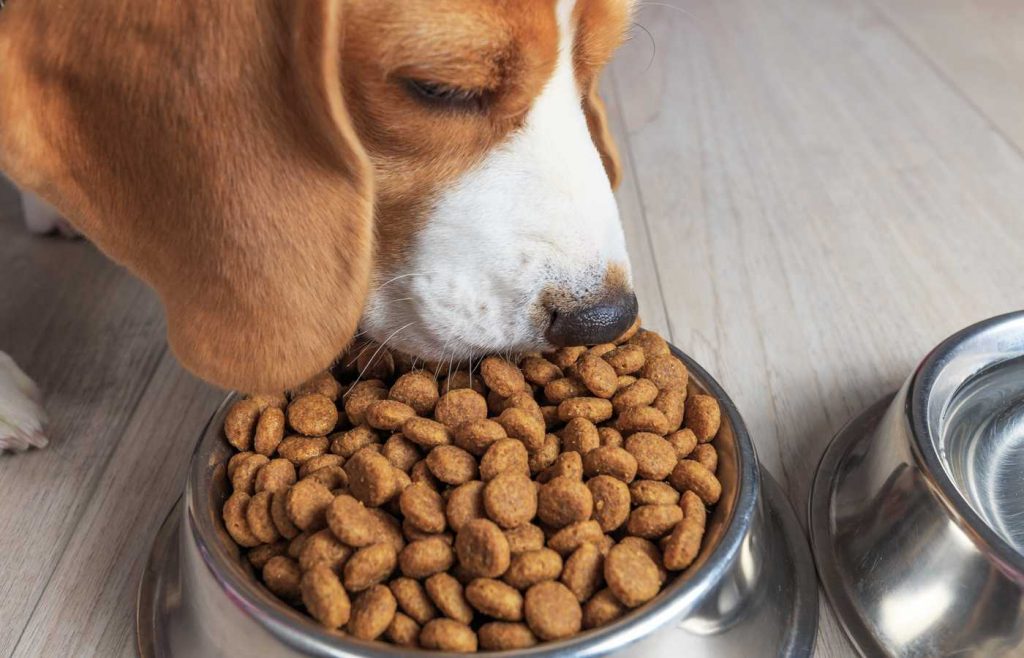The Worst Ingredients Commonly Found in Dog Food
Related ads
Dogs deserve safe foods with safe ingredients. However, that’s difficult when economics and marketing get in the way of what’s considered healthy for your beloved family member.
You can’t trust pet food manufacturers since they often use tricks to make their products seem attractive and better. But the fact is, most dog food contains high amounts of horrible ingredients.
The best way to avoid being misled by a food company is to check the full ingredients list on the packaged food. Terrible ingredients can put your dogs at risk of developing chronic diseases such as diabetes or even premature death.
It’s therefore wise to learn what these ingredients are and how do they affect your pet’s health. On that note, keep on reading to find out what horrible ingredient we’re talking about…
4 Horrible Ingredients that can harm your dog’s health
4-D Meat Products
You might want your dog’s snack to contain delicious healthy meat. But the reality is that most food companies use 4-D meat products in their dog foods.
4-D stands for Diseased, Disabled, Dying, or Dead. These are meat products that are not suitable for human consumption. However, pet food companies salvage these products and include them in their food products.
You need to understand that 4-D meat products are not illegal, but they can be hazardous to both humans and animals, even the FDA acknowledges this.
While some dogs may fall sick immediately after consuming 4-D meat products, others can develop long-term health conditions. These meat products are often characterized by poor quality fat that can cause chronic conditions or even impair cognitive functioning or your dog.
Corn and Corn Syrup
These cheap products are often used to increase the volume of pet food, yet they have little to no nutritional value.
Furthermore, these ingredients can be very hazardous to canines. Corn syrup is sweeter than even refined sugar, meaning it can cause spikes in blood sugar levels, promote weight gain, obesity, and even diabetes.
It also an additive and the more your dog eats eat the more he develops a taste for sweet stuff.
Grains
Just like humans, dogs can develop allergies if they consume grains. Unfortunately, you only find out that your dog has a grain allergy once it has consumed grains.
All in all, it’s wise to avoid giving your dog’s grain-based food, even if he doesn’t have a grain allergy.
Most pet food companies use grains as filler to add weight and change the texture of the food rather than adding nutrients. Grains don’t possess enough proteins and don’t provide dogs with enough energy.
Preservative, Dyes, and Other Add-ins
Dyes, preservatives and other chemicals can harm your dog’s health. Countries like the US, Europe, and Canada have banned the use of preservatives like BHA and BHT in human and pet foods.
Research links BHT and BHA to hyperactivity, cancer, and kidney diseases. Ethoxyquin is another harmful preservative you need to avoid. It’s banned in human food, but it’s not controlled in pet foods.
Dyes can cause cancer, chemical reactions, and even behavioral problems. Common dyes like Blue 2, Red 40, and Yellow 5 or 6 are linked to health issues in canines. Also, check your dog’s food for ingredients like propylene glycol, common is soft dog food and treats.
How to Select a Good Dog Food?
The key to selecting the right food for your dog is understanding the labels on the foods and treats. Most food companies list the ingredient in terms of weight, but this often includes water weight.
If the food contains meat as the first ingredient. The food is approximately 75% water, meaning all the water and fat have been removed to make the protein more concentrated.
Also, choose dog foods containing a statement from the AAFCO (Association of Animal Feed Control Officials). For dog food to receive an AAFCO statement it must provide the dog with complete nutrition.
The label should also indicate which dog age group is the food meant for, whether its puppies, adult dogs, or senior dogs.
All pet food factories must produce a list of the minimum amount of protein and fat in their food products. Since most dogs might not utilize all the protein and fat in the food. Therefore, select food with a higher percentage of protein and fat to ensure you’re receiving the right blend.
Finding the Great Deals on Healthy Dog Food
We understand it’s difficult to find healthy and affordable dog food, particularly if you limit your search to the only store in your neighborhood.
If you want to find great deals on safe dog foods, carefully do your homework. Go online and research or ask a veterinarian for advice so you can make informed decisions.
If you don’t understand your dog’s nutritional needs, don’t buy just any food. Talk to your local area veterinarian to get help, then go online and find the best food for your dog.
Don’t restrict yourself to your local dog food store, there are several stores out there that can offer you what you’re looking for.
What’s even better is that most dog food manufactures are online, offering you a chance to find healthy foods that contain the right amount of healthy ingredients and within your budget.
Now that you know which ingredients can pose a threat to your dog’s health, you can now go online and search for dog products that are free from these ingredients. Just like your health, your dog’s health should always be on your mind.
Related ads

